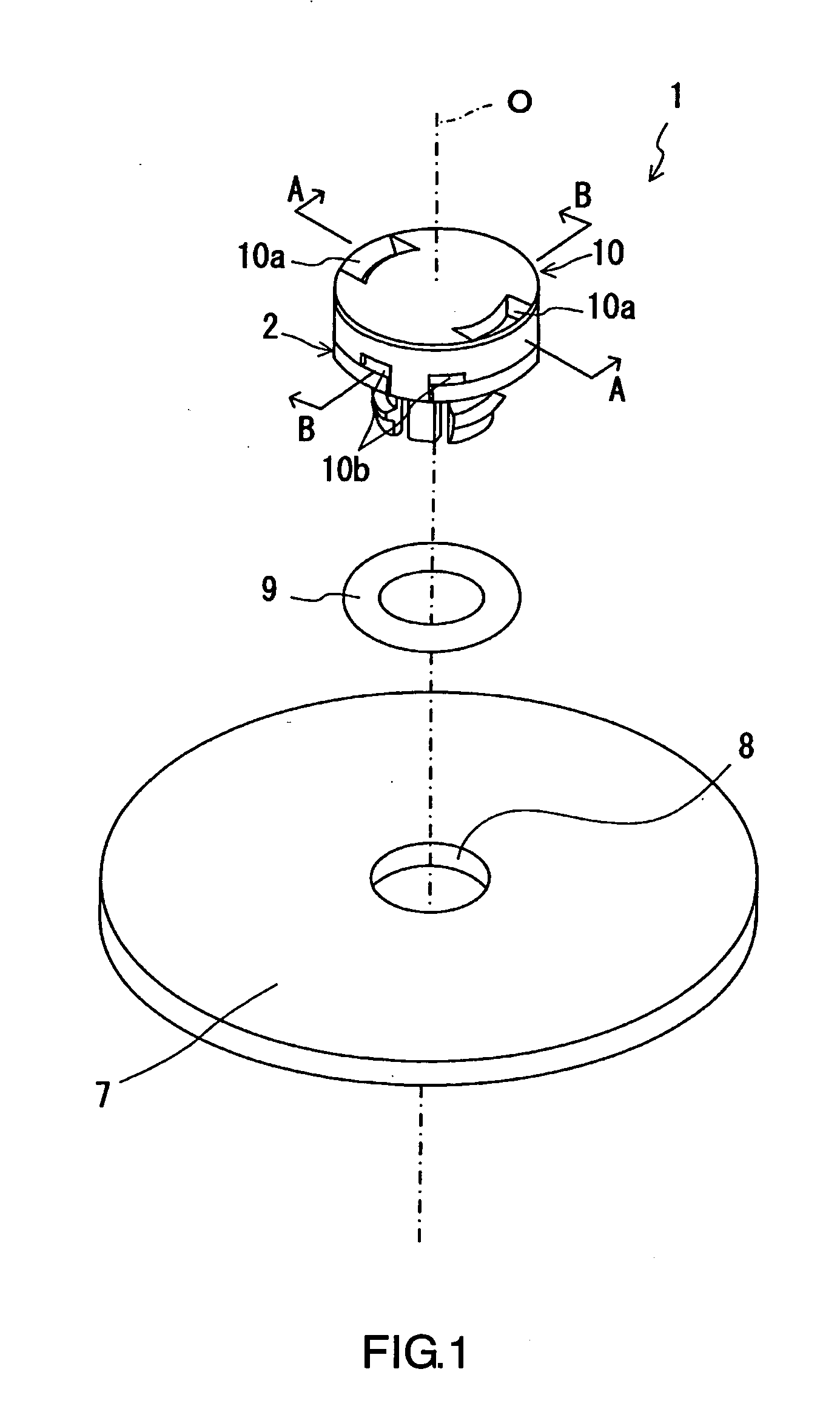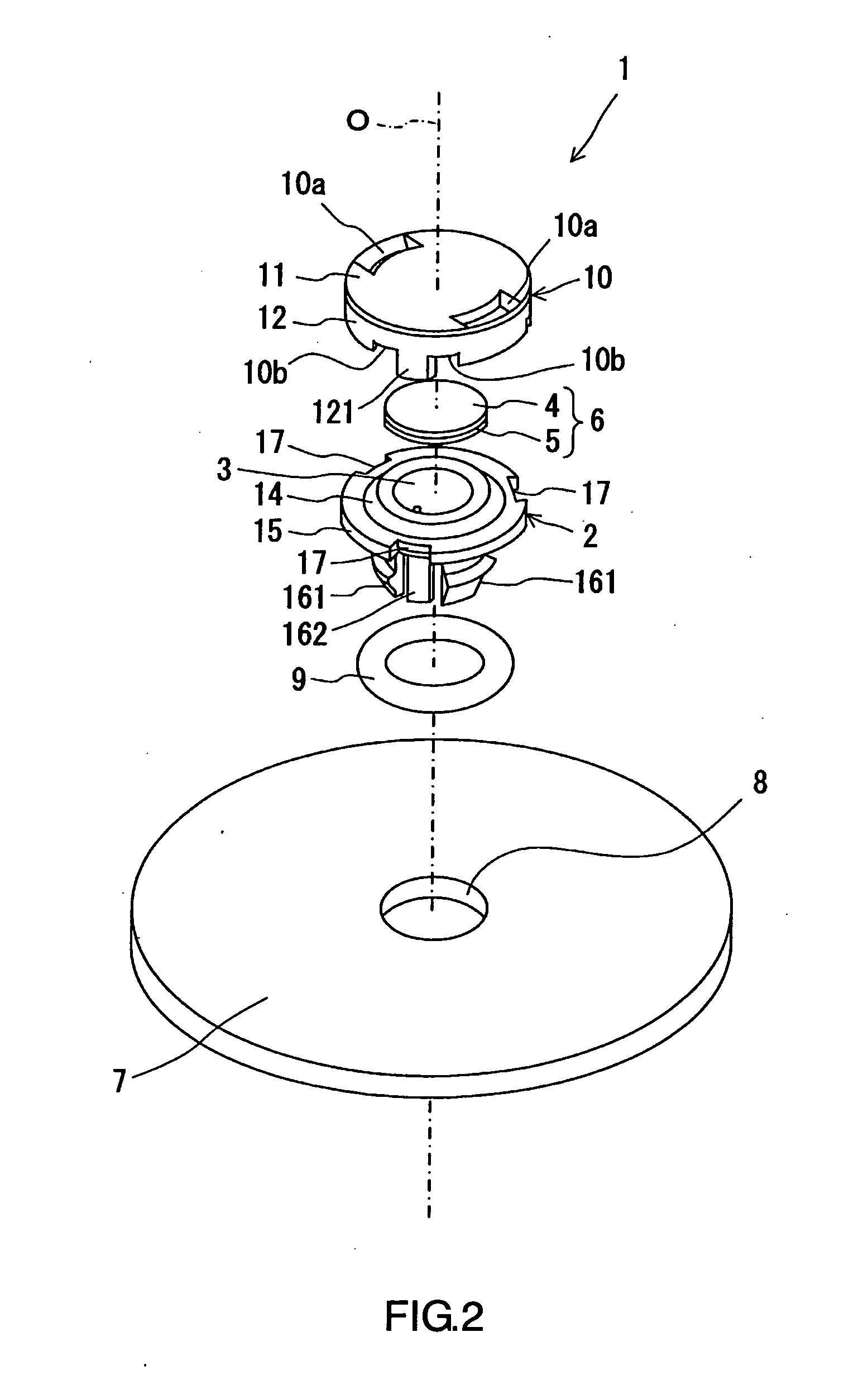Vent Member
- Summary
- Abstract
- Description
- Claims
- Application Information
AI Technical Summary
Benefits of technology
Problems solved by technology
Method used
Image
Examples
second embodiment
[0056]A vent member 21 shown in FIG. 11 is the same as the vent member 1 described above except that the leg portions 161 and 162 are omitted. The vent member 21 is used in a state where the base portion 15 of a support body 22 is joined directly to the opening 8 of the housing 7 with an adhesive. Although this configuration raises a need to join the components with an adhesive, it is possible to ensure higher air tightness because a problem, such as deterioration of a seal ring, is eliminated. Alternatively, the housing 7 and the vent member 21 may be made into one piece by a known insert molding method by disposing the vent member 21 inside a forming mold used to shape the housing 7. Because the vent member 21 as described above does not use a seal ring, it is possible to reduce an amount of protrusion from the surface of the housing 7 by a comparable amount.
third embodiment
[0057]Advantages similar to those achieved by the vent member 1 shown in FIG. 1 and the other relevant drawings also can be achieved by a vent member 31 shown in FIG. 12. The vent member 31 shown in FIG. 12 includes a mesa-like portion 34 having a surface 34q, which is a curved surface, and a support body 32 including a base portion 35 positioned on the lower side of the mesa-like portion 34. When the permeable membrane 6 is fixed to the mesa-like portion 34 of the support body 32, the surface of the permeable membrane 6 is changed to a slightly curved shape by following the mesa-like portion 34. Accordingly, water hardly remains on the permeable membrane 6 whose surface is thus curved.
PUM
 Login to View More
Login to View More Abstract
Description
Claims
Application Information
 Login to View More
Login to View More - Generate Ideas
- Intellectual Property
- Life Sciences
- Materials
- Tech Scout
- Unparalleled Data Quality
- Higher Quality Content
- 60% Fewer Hallucinations
Browse by: Latest US Patents, China's latest patents, Technical Efficacy Thesaurus, Application Domain, Technology Topic, Popular Technical Reports.
© 2025 PatSnap. All rights reserved.Legal|Privacy policy|Modern Slavery Act Transparency Statement|Sitemap|About US| Contact US: help@patsnap.com



